This weekend was the 35th annual New York/Metro area Fest for Beatles Fans (“Beatlefest”, or just “the Fest”, for short), held on Friday, Saturday, and Sunday on the first and second floors of the Crowne Plaza Meadowlands Hotel in Secaucus, NJ. This was my fifth consecutive year at the Fest (though altogether my tenth or eleventh Fest; I also used to go about every year from the age of five to about ten or eleven). Throughout my recent Fest-going years, my reasons for attending have varied, as have my company and the focus of my interests. The first three years were spent with a whole gaggle of people, including my parents, my little brother, a handful of second-cousins and first-cousins-once-removed, and my Uncle “Otto” (real name: John. I don’t get it either) and his band, which play in the Fest’s “Battle of the Beatle Bands” (a contest between amateur Beatles cover bands that takes place every year on the last night of Beatlefest) every few years. Those years were spent primarily between the marketplace, buying exorbitant amounts of Beatles merchandise; the hotel room where the band was staying; and the second-floor lounge where Fest-goers can dance to a live Beatles cover band called The Bootlegs. Then in the evening, we watched “The Battle of the Beatle Bands”. Last year, I went with two of my friends, one who’d never been to the Fest before and another who goes every single year. While the main focus of that Fest was showing my Fest-virgin friend as many of the regular Fest attractions that we possibly could, we also spent a great deal of time in the marketplace, as well as waiting on line in vain (I can’t remember if we got tired of waiting, if they never showed up, or if they left before we could get to them) to meet some cast members from “Across the Universe”. This year, I went with my mother and Uncle Otto (who’s been taking a hiatus from the “Battle of the Beatle Bands”), and our main focus was the special guests.
We arrived at the Saturday Fest earlier than usual, so the only thing there really was to do (besides shop, which we’d have plenty of time for later) was watch the early-bird puppet show with Bob Abdou, a.k.a. “Mr. Puppet”. Abdou puts on puppet shows at Beatlefest every year, but I had never seen one until this year, mostly because I rarely show up so early to the Fest. Due to my lifelong fondness for puppets (blame it on my early exposure to “Fraggle Rock” and “The Muppet Show”), I decided to convince my elderly companions that we should see it, if for nothing else, for lack of anything better to do. Though the audience was primarily made up of prepubescents and their parents, the show kept the childless adult minority happy with some surprisingly daring jokes (not offensive, but not kid-oriented either), though the puppeteer having his magic talking whiteboard (Ringo’s face, in cartoon form, was drawn on what initially looked like a regular draw-erase board, but the puppeteer somehow got the pupils and mouth to move. I still can’t figure out how this thing worked, which is what made it so cool) sing Ringo’s “No No Song” — with its blatant references to marijuana, cocaine, and moonshine whisky — was just barely crossing the line. But since it’s more of an anti-drug song than anything else, I let it slide. Besides the whiteboard, the puppets included Muppet-like versions of modern-day Ringo (with the ring-adorned fingers on each hand fixed into permanent peace signs) and “Give Peace a Chance”-era John Lennon (long auburn hair, shaggy beard, all-white suit), a marionette Paul McCartney who sang “Yesterday” (who was creepy by default, being a marionette, but as far as marionettes go, he was more cute than creepy), and a simple hand puppet of George Harrison, who appeared very briefly to introduce “Yesterday” (I just wish there could have been more George in the show, as he is my favorite Beatle). The Muppets themselves even appeared at the end singing their own version of “All Together Now” (Mr. Puppet called upon four or five pre-adolescent volunteers from the audience to help operate hand-puppet versions of Kermit, Miss Piggy, Fozzie Bear, Animal, and Cookie Monster). I enjoyed the puppet show immensely (’cause I’m a big kid like that). I’ll have to remember to come to Beatlefest early more often!
After the puppet show, there was still time to kill before the guests we wanted to see showed up, so we headed for the marketplace, naturally. Since I’d already bought enough Beatles t-shirts in the previous years to last me several weeks, and had bought all The Beatles buttons I could ever wish to own (besides maybe the “I slept with George Harrison” button I spotted at the fest this year, which I decided against buying due to the awkward questions it would inevitably elicit), I was content with making the modest purchase of three magazine back issues (a special issue of “Mojo” with photos of The Beatles’ early to middle years, an issue of “Q” with a cover story on Dylan, and an issue of “Record Collector” with articles on The White Stripes, Bob Dylan, The Beatles, and The Rolling Stones. The only thing keeping that issue of “Record Collector” from being 100% perfect for me was its lack of anything on Tom Petty), and my mom treated me to a “Help!” DVD so I’d have something for the guest I most looked forward to seeing — Welsh actor Victor Spinetti, who was in The Beatles’ first three films — to sign in case I got to meet him.
At around 2:00 we went to the Imperial Ballroom to hear Spinetti talk for an hour, which flew by as he fondly recounted his experiences with The Beatles and talked about the significant cult following he had amongst Beatles fans. Afterwards, he went out into the lobby to sign autographs, and I had him sign my DVD case and take a picture with me. When viewed from a distance, he looked unrecognizable from the young, slim, less balding version of himself that I was familiar with, but up close he had the same face I knew so well from “A Hard Day’s Night”, “Help!”, and “Magical Mystery Tour”: the oddly upturned nose, the cunning grin. Next, I met Neil Innes of the Bonzo Dog Doo-Dah Band, “The Rutles”, and Monty Python (not an official member, but sometimes referred to as the “7th Python”, the Python equivalent of “5th Beatle”. In “Monty Python and the Holy Grail”, he was Robin’s singing minstrel and the head-smacking monk whose hooded face is seen at the beginning of the “We’ve got a witch!” scene). He was extremely nice, and when I asked him if he’d sign a Rutles CD for my roommate (who really wanted to meet Innes, but couldn’t make it to the Fest due to family obligations), he asked if I was in college and if I was enjoying my college days. I later met guitarist Earl Slick, who played on John Lennon’s “Double Fantasy” and “Milk and Honey” albums, and who, despite being in his late 50s, looked like Sid Vicious, only healthier and friendlier. He signed my Beatlefest program without much conversation (I guess meeting Innes beforehand spoiled me), and the only thing left to do after that was wait in line to meet Ronnie Spector of the Ronnettes, which took a very long time (during which I spotted Bob Abdou walking around with “Ringo” and got to take a picture with the puppet), but was totally worth it. Spector, in spite of the diva-type image her massive beehive hairdo and outrageous eye makeup (think Amy Winehouse, only cuter and without the tattoos, missing teeth, or perpetual wastedness) may have conveyed in the early sixties, was very friendly, and her page-consuming signature would have made John Hancock envious. After signing my program, she even complimented my hat (I was wearing the snazzy fedora that I’d bought over spring break). I’d say this was yet another successful Beatlefest.
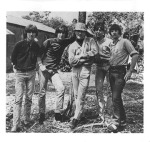
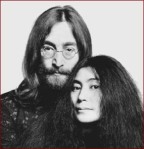
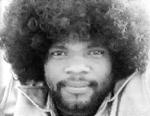
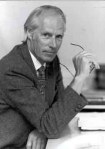
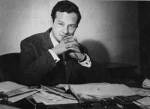
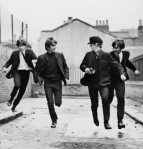
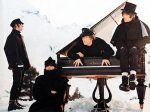
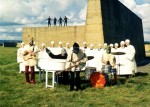
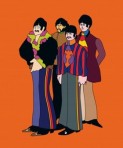

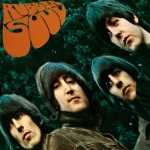 “Rubber Soul” (1965)
“Rubber Soul” (1965)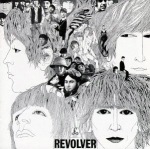 “Revolver” (1966)
“Revolver” (1966)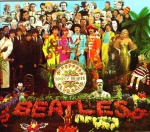 “Sgt. Pepper’s Lonely Hearts Club Band” (1967)
“Sgt. Pepper’s Lonely Hearts Club Band” (1967)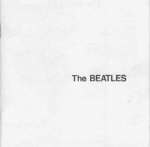 “The Beatles”, a.k.a. “The White Album” (1968)
“The Beatles”, a.k.a. “The White Album” (1968)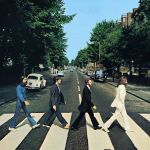 “Abbey Road” (1969)
“Abbey Road” (1969)